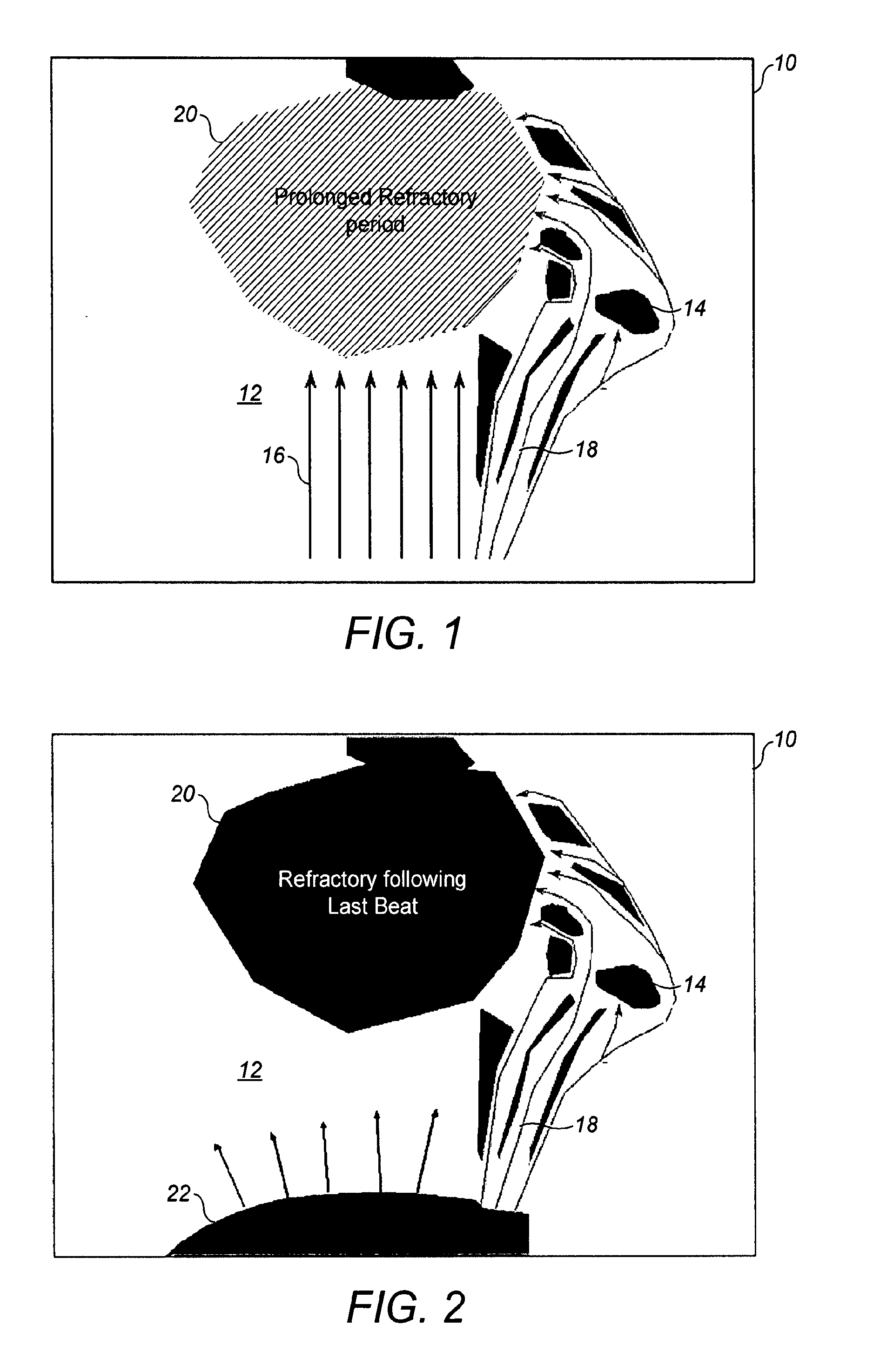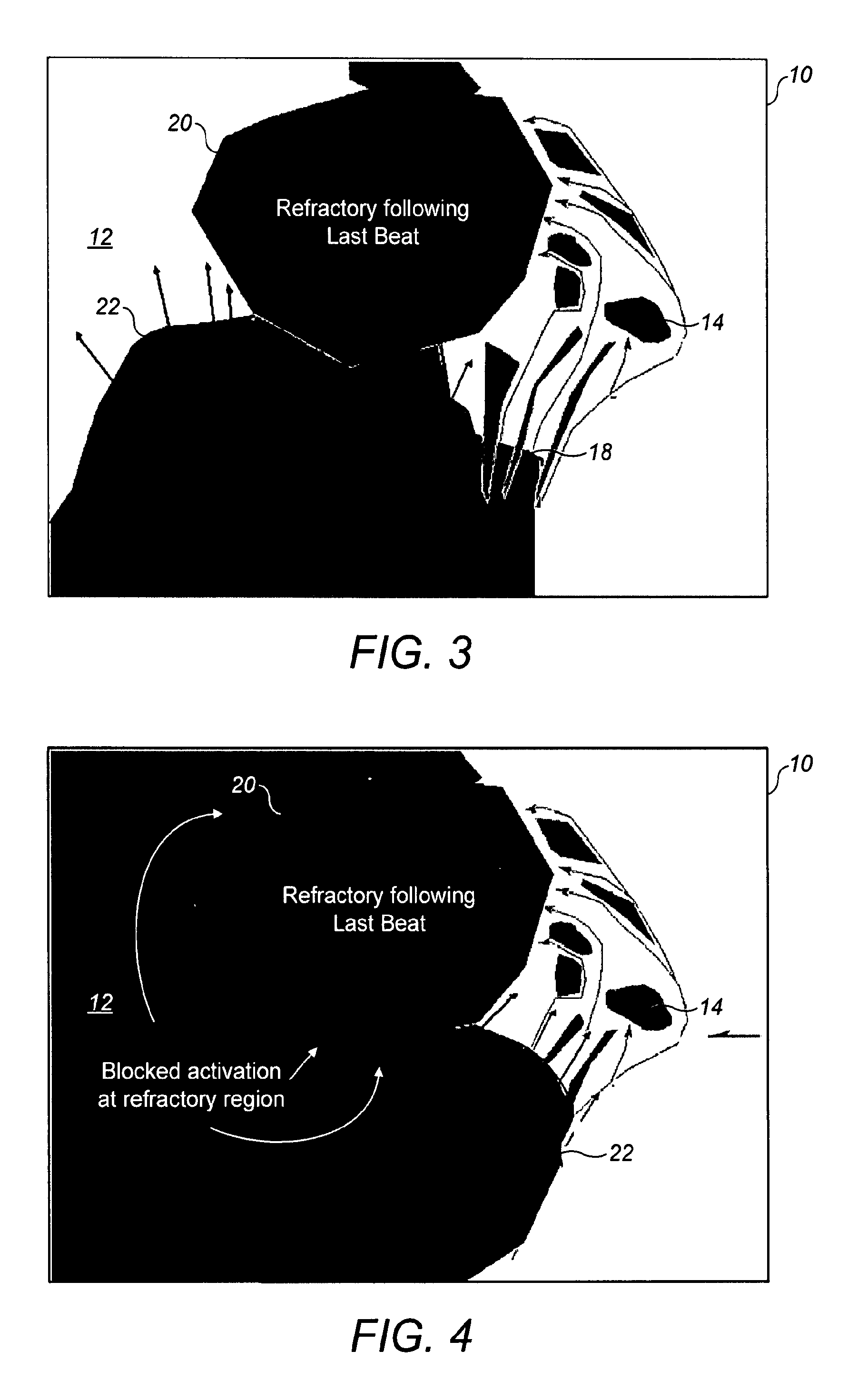System for analysis of electrograms
an electrogram and electrogram technology, applied in the field of systems for performing and analysing electrograms, can solve the problems of scarring of the muscle tissue of the heart, increased transverse propagation of the tissue, and refractory area
- Summary
- Abstract
- Description
- Claims
- Application Information
AI Technical Summary
Benefits of technology
Problems solved by technology
Method used
Image
Examples
Embodiment Construction
[0144]As discussed above, the present invention relates to the apparatus for performing and analysing paced electrograms. The present invention includes various methods and arrangements each of which will be discussed in detail in turn.
Processing of Data from Electrograms
[0145]Aspects of the processing of an electrogram 100 produced from stimulating a heart by inserting electrodes therein, for example, as described with reference to FIGS. 9 to 11 will firstly be described. An aspect of particular importance to the interpretation of electrograms is the post-processing of signals so as to reduce noise, so that potentials may be distinguished from noise in the signal, and so that the potentials can be recorded accurately. As is known in the art, signals inherently contain a mixture of noise and data, the noise originating from background sources such as fluorescent lights, X-ray heads, motors, monitors, other equipment commonly found in labs or hospitals, or poor catheter connections. ...
PUM
 Login to View More
Login to View More Abstract
Description
Claims
Application Information
 Login to View More
Login to View More - R&D
- Intellectual Property
- Life Sciences
- Materials
- Tech Scout
- Unparalleled Data Quality
- Higher Quality Content
- 60% Fewer Hallucinations
Browse by: Latest US Patents, China's latest patents, Technical Efficacy Thesaurus, Application Domain, Technology Topic, Popular Technical Reports.
© 2025 PatSnap. All rights reserved.Legal|Privacy policy|Modern Slavery Act Transparency Statement|Sitemap|About US| Contact US: help@patsnap.com



